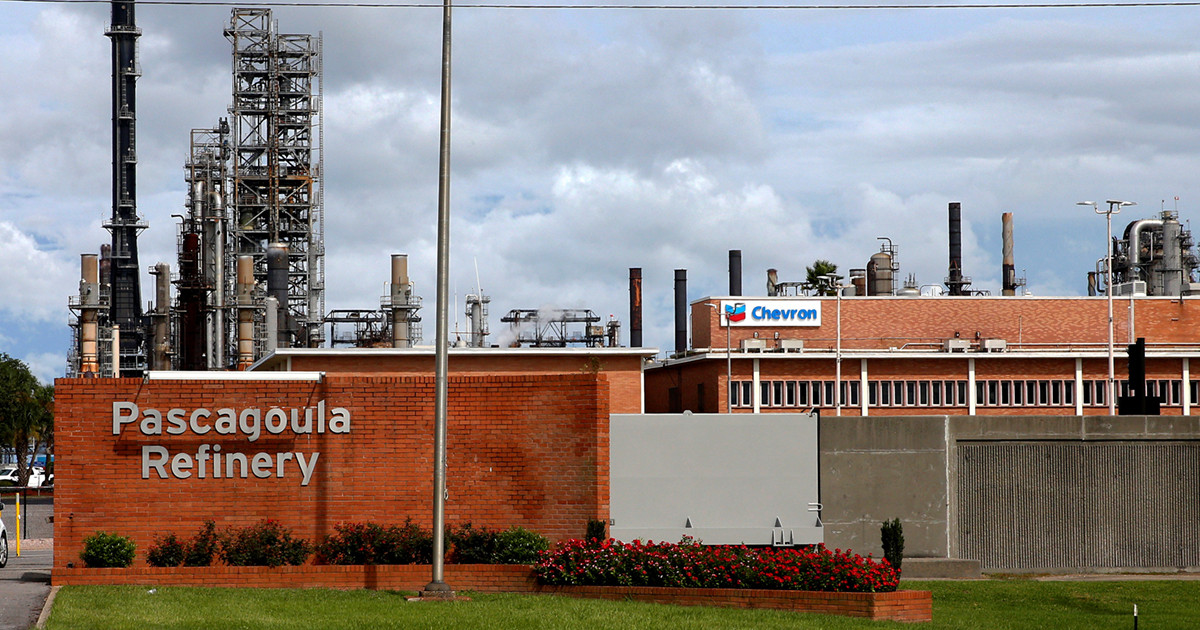The Environmental Protection Agency approved a component of boat fuel made from discarded plastic that the agency’s own risk formula determined was so hazardous, everyone exposed to the substance continually over a lifetime would be expected to develop cancer. Current and former EPA scientists said that threat level is unheard of. It is a million times higher than what the agency usually considers acceptable for new chemicals and six times worse than the risk of lung cancer from a lifetime of smoking.
Federal law requires the EPA to conduct safety reviews before allowing new chemical products onto the market. If the agency finds that a substance causes unreasonable risk to health or the environment, the EPA is not allowed to approve it without first finding ways to reduce that risk.
But the agency did not do that in this case. Instead, the EPA decided its scientists were overstating the risks and gave Chevron the go-ahead to make the new boat fuel ingredient at its refinery in Pascagoula, Mississippi. Though the substance can poison air and contaminate water, EPA officials mandated no remedies other than requiring workers to wear gloves, records show.



This is the most shocking article I’ve read in a very long time.
Time to write or call the EPA. I have to look up how to do that. - report submitted here, you can submit one here: https://echo.epa.gov/report-environmental-violations
Literally everyone near these fuel emissions will(not can) get cancer, and 7% of people who eat fish living near these fuels get cancer. WHaT?!?
Why would they care? That they just approved this stuff is sufficient proof that the right people got the “right incentive” to wave it through. Why should they anger the people who paid them?
Doing nothing changes nothing, while trying to make a difference could make a difference
Just saying, this is only being manufactured at one refinery right now, yeah? Maybe there would be a good place to protest.
What’s the point of having an EPA if you have to write them letters to get them to do their job? They’ll just ignore it anyway.
Doing nothing changes nothing, while trying to make a difference could make a difference
Doing nothing? I’m just trying to live my fucking life here.
Live it up, bruv. Nobody’s saying you have to do anything, I’m providing a link to make a report for anybody who wants to.
Yeah we all are… Some will still write the EPA though.
The EPA is an executive agency right? Maybe if we raise enough hell to Biden himself, he can stop this shit.
7 percent of the people who eat fish will get cancer? Fish travel and their nutrients travel. Absolutely fuck this shit.
And chevron’s planning to use these fuels at 100 locations according to Pro-Publica so, yeah it’s a huge problem.
I just found the EPA reporting link online, what do you mean by raising enough hell to Biden himself, is there some sort of contact route to the president? And yeah, the EPA is an executive agency.
It doesn’t say that. It refers to exposure “continually over a lifetime”.
There aren’t all that many substances that won’t cause cancer with continuous exposure over a lifetime. Gasoline certainly will, but so will sawdust or grape juice.
This article reads very much like the “Dihydrogen Monoxide” warnings. Let’s step back for a second and critically evaluate what is being claimed.
wait what?
Also what about Nestea Zero. Asking for a friend
The EPA didn’t release a report that people continually exposed to water will definitely get cancer.
These two new fuels using plastic-based refined chemicals have been determined by the EPA to definitely give people cancer over repeated exposure throughout their lives.
These poisonous chemicals determined by the EPA read nothing like jokes for middle school science teachers.
They don’t even name the agent in question, or provide any information on its chemical composition. There is no way to corroborate any of the information given.
Do you even critically think, bro?
The chemicals subject to these proposed SNURs are as follows:
PMN Numbers (proposed 40 CFR citation): P–21–144 (40 CFR 721.11781), P–21–145 (40 CFR 721.11782), P–21–146 (40 CFR 721.11783), P–21–147 (40 CFR 721.11784), P–21–148 (40 CFR 721.11785), P–21–149 (40 CFR 721.11786), P–21–150 (40 CFR 721.11787), P–21–152 (40 CFR 721.11788), P–21–153 (40 CFR 721.11789), P–21–154 (40 CFR 721.11790), P–21–155 (40 CFR 721.11791), P–21–156 (40 CFR 721.11792), P–21–157 (40 CFR 721.11793), P–21–158 (40 CFR 721.11794), P–21–160 (40 CFR 721.11795), P–21–161 (40 CFR 721.11796), P–21–162 (40 CFR 721.11797), and P–21–163 (40 CFR 721.11798).
Chemical Names: Naphtha, heavy catalytic cracked (generic) (P–21–144), Naphtha, heavy alkylate (generic) (P–21–145), Naphtha, full range alkylate, butane–contg. (generic) (P–21–146), Naphtha, hydrotreated heavy (generic) (P–21–147), Naphtha, light catalytic cracked (generic) (P–21–148), Naphtha, light alkylate (generic) (P–21–149), Naphtha, hydrotreated light (generic) (P–21–150), Clarified oils, catalytic cracked (generic) (P–21–152), Distillates, hydrotreated heavy (generic) (P–21–153), Gas Oils hydrotreated vacuum (generic) (P–21–154), Distillates, light catalytic cracked (generic) (P–21–155), Distillates, clay-treated middle (P–21–156), Distillates, hydrotreated middle (generic) (P–21–157), Distillates, hydrotreated light (generic) (P–21–158), Gases, C4-rich (generic) (P–21–160), Gases, catalytic cracking (generic) (P–21–161), Residues, butane splitter bottoms (generic) (P–21–162), and Tail gas, saturate gas plant mixed stream, C4-rich (generic) (P–21–163).
Per the EPA:
https://www.regulations.gov/document/EPA-HQ-OPPT-2023-0245-0001
https://www.regulations.gov/docket/EPA-HQ-OPPT-2023-0245/document
And here’s the full report: https://www.documentcloud.org/documents/23886219-integrated-risk-assessment-for-chevron-waste-plastic-fuels
Do you mean you didn’t notice the included EPA report or you didn’t read the EPA report they obtained through FOIA?
It’s the one titled “Integrated Risk Assessment for Chevron Waste Plastic Fuels”.
The carcinogenic claims I read in the article would apply to “gasoline” just as much as the unnamed, undefined, “evil villain chemical(s)” described. The article is heavy on FUD, but very light on fact.
True, gasoline would not be approved today by the EPA’s own rules as it is a carcinogen. That’s how fucked our environment is.
That doesn’t mean that gasoline is not a dangerous substance, it just means that it has been grandfathered into the regulatory structure because of predates the EPA.
It’s an EPA report, specifically about plastic-based fuels that give people cancer, reported by more than one credible news source and corroborated by an EPA veteran.
Giving people cancer does not make a chemical an “evil villain”, but a fuel company known to abuse human rights and destroy the environment with carcinogens developing and the EPA approving fuels that they have determined give people cancer 100% of the time over repeated exposure is something that should be stopped, or if the EPA has made a mistake, made clear and retested.
This article is heavy on data and precedent, your comment is not.
It is not an EPA report. It is a sensationalist article on ProPublica. Do not conflate the two.
Missed the report and the EPA/Chevron corroboration?
Here’s the report from the article you didn’t read:
https://www.documentcloud.org/documents/23886219-integrated-risk-assessment-for-chevron-waste-plastic-fuels